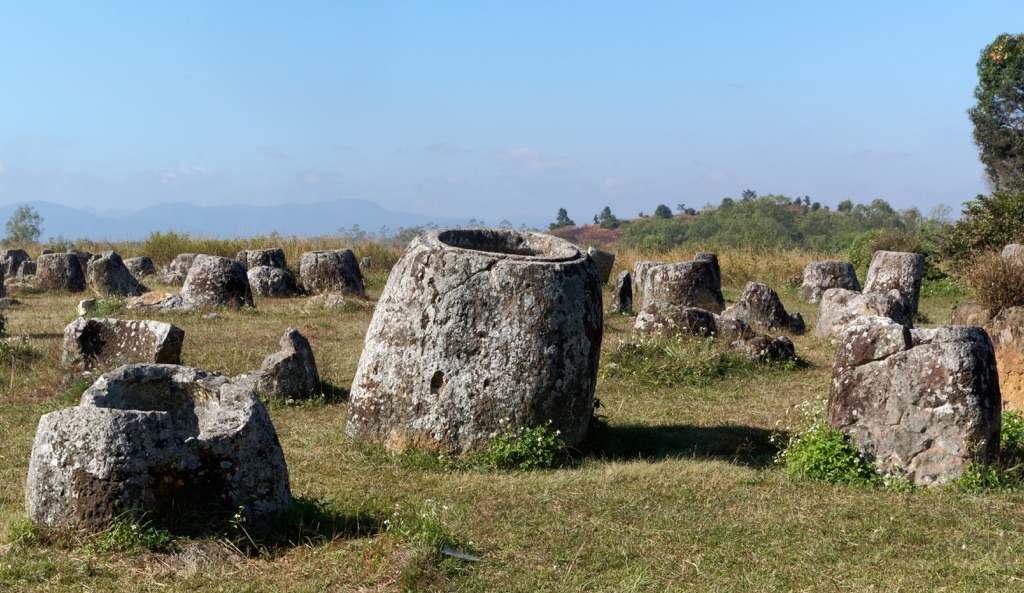The Plain of Jars is a remarkable archaeological site in Laos, consisting of thousands of stone jars scattered across the Xieng Khouang plateau. These jars, some towering at three meters tall and weighing several tons, have perplexed scientists and historians for decades. The site, dating back to the Iron Age (500 BC to 500 AD), is one of Southeast Asia’s most enigmatic and enduring archaeological mysteries. The Plain of Jars has been recognized as a UNESCO World Heritage site, underscoring its cultural and historical significance.
Get your dose of History via Email
Historical Background of The Plain of Jars
French researcher Madeleine Colani first documented The Plain of Jars in the 1930s. However, local legends and lore had long spoken of the jars’ existence. The area, rich in history, has seen numerous inhabitants over the centuries. The jars themselves are believed to have been crafted by an ancient civilization, with some theories suggesting they were used for prehistoric burial practices. During the Second Indochina War, the site was heavily bombed, yet the jars remarkably survived, adding another layer to their historical significance.
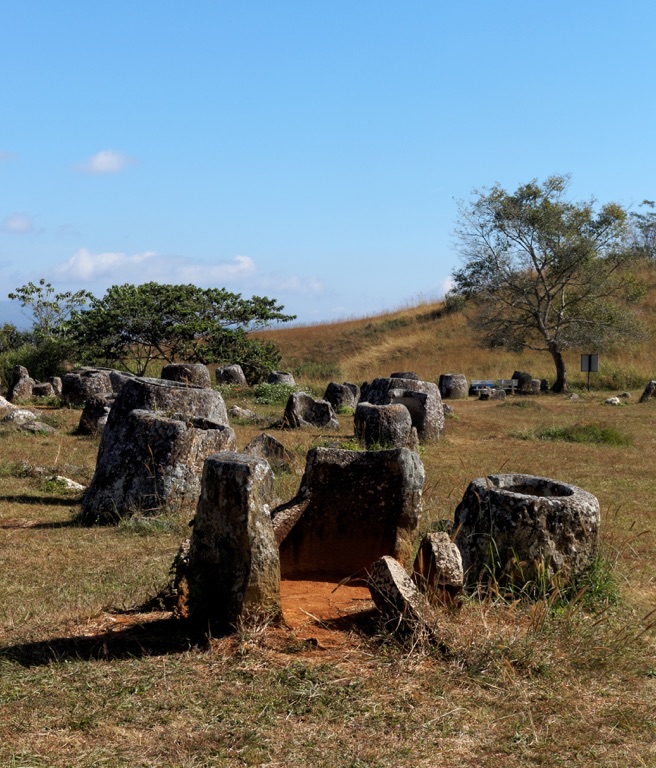
The creators of the jars remain a mystery, but they were likely an indigenous group with complex social structures and beliefs. The jars’ craftsmanship suggests a society with advanced knowledge of quarrying, carving, and transportation. Over time, different groups have inhabited the region, including the Hmong people, who have their own interpretations of the jars’ origins and uses. The site has not only been a silent witness to the passage of time but also to significant historical events, including conflicts that have shaped the region’s history.
Archaeological evidence indicates that the jars were in use for many centuries, serving various purposes throughout history. While the original builders likely vanished, the jars remained, and their legacy was incorporated into the traditions of subsequent inhabitants. The Plain of Jars has thus been a continuous part of the living history of Laos, with each era leaving its mark on the landscape.
The site’s historical importance is not only due to the jars themselves but also because of the insight they provide into prehistoric life in Southeast Asia. The jars offer a tangible connection to the past, allowing historians and archaeologists to piece together the region’s complex history. Despite the destruction caused by war, the site has been preserved enough to continue to be a source of fascination and study.
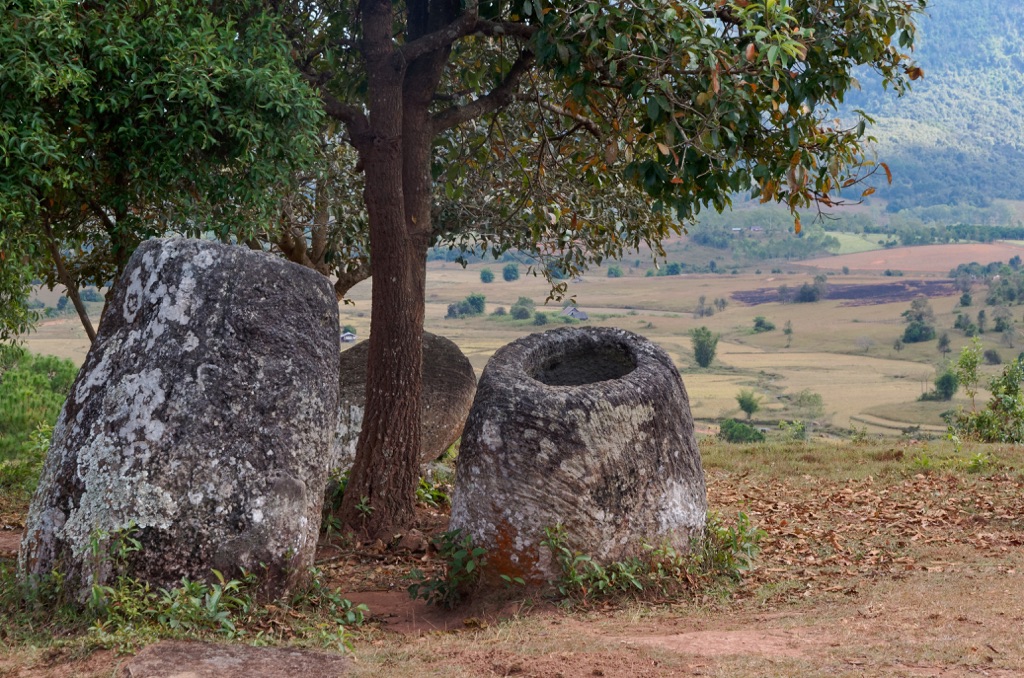
While the jars have survived for thousands of years, modern threats such as development and tourism pose new challenges. Efforts to preserve the site are ongoing, with local and international teams working to ensure that The Plain of Jars can be studied and appreciated for generations to come. The site’s resilience is a testament to its builders and to the enduring nature of cultural heritage.
About The Plain of Jars
The Plain of Jars consists of over 2,100 tubular-shaped jars, carved from stone. These jars vary in size, with the largest being up to three meters high and weighing several tons. The stone used to create the jars is a type of sedimentary rock, which suggests that the ancient people who made them had a sophisticated understanding of the materials available to them.
The jars are spread out across dozens of sites on the Xieng Khouang plateau. The landscape is characterized by rolling hills and grasslands, which provide a picturesque backdrop to the mysterious jars. The methods of construction and transportation of these massive stone vessels remain a topic of debate among researchers.
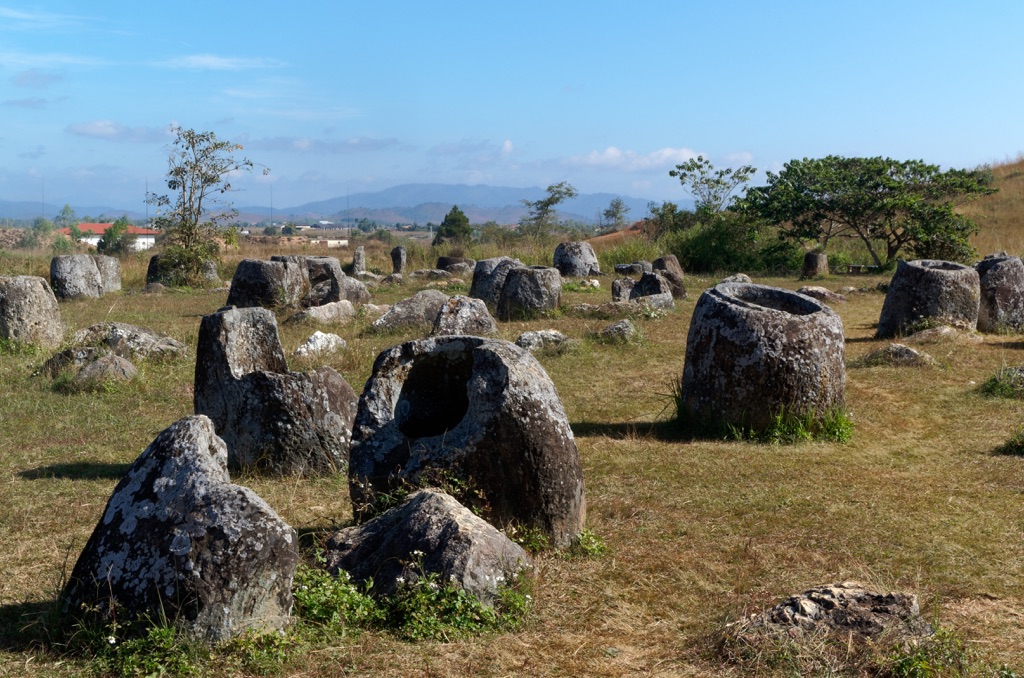
Architecturally, the jars are simple yet imposing, with some featuring stone lids or decorative carvings. The precision with which they were made indicates a high level of skill and suggests that they held significant importance for their creators. The arrangement of the jars, often in clusters, points to a methodical placement with potential ceremonial or functional purposes.
Excavations around the jars have uncovered human bones, iron tools, and ceramics, which provide clues to their use. The discovery of burial goods suggests that the jars may have been part of complex funerary practices, serving as burial urns or food storage for the afterlife. The archaeological findings have helped to paint a picture of a culture that was both innovative and deeply spiritual.
The Plain of Jars is not only an archaeological wonder but also a cultural treasure. It offers a unique glimpse into the ingenuity of ancient societies and their relationship with the environment. The site continues to captivate visitors and researchers alike, with its monumental jars standing as silent sentinels of a bygone era.
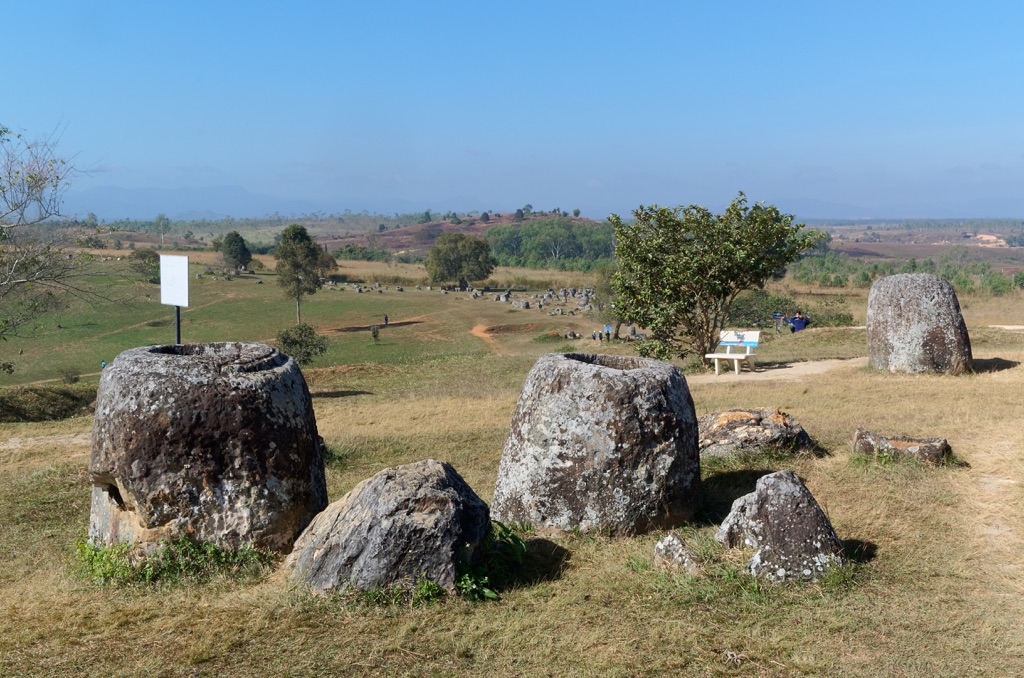
Theories and Interpretations
Several theories have been proposed regarding the purpose of The Plain of Jars. The most widely accepted theory is that the jars were used for prehistoric burial practices. This is supported by the discovery of human remains and burial goods in and around the jars. Some researchers believe the jars were part of complex secondary burial rituals, where bodies were left to decompose elsewhere before the bones were cleaned and placed into the jars.
Another theory suggests that the jars were used to collect monsoon rainwater for caravans traveling along ancient trade routes. This interpretation, however, is less supported by archaeological evidence. The mystery of the jars is compounded by the lack of written records from the time of their creation, leaving much to the interpretation of modern scholars.
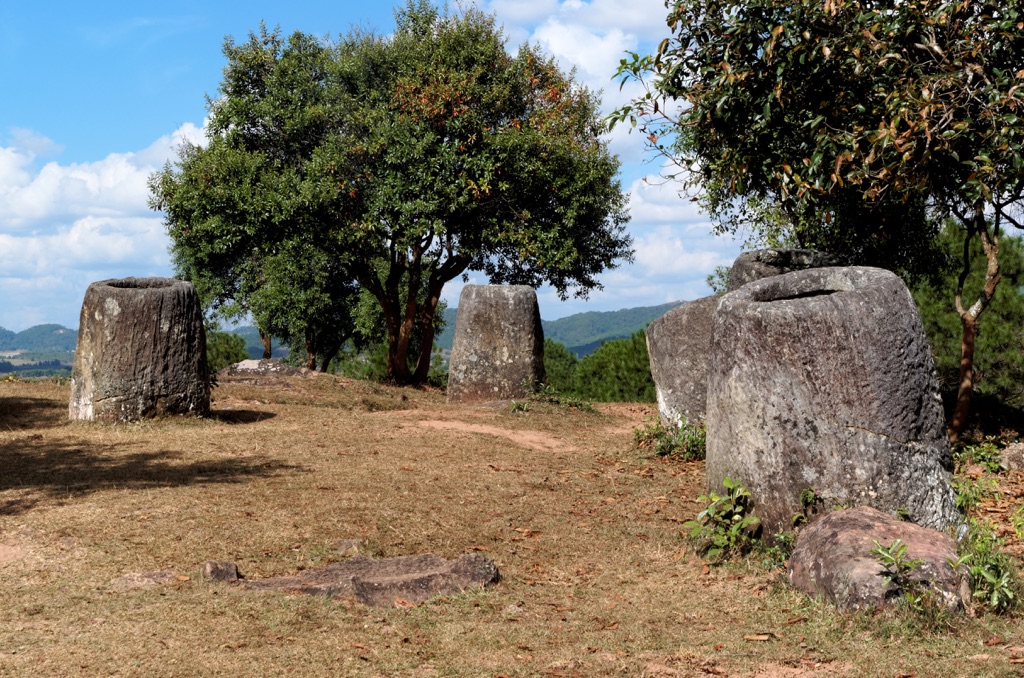
Matching the jars to historical records has been challenging due to the scarcity of written documentation from the period. However, local legends and oral histories have provided some context, suggesting that the jars were involved in a range of cultural practices, from food storage to distilling local brews.
Dating the jars has been carried out using a variety of methods, including stratigraphy and radiocarbon dating. These techniques have helped establish a rough timeline for the jars’ creation and use, placing them in the Iron Age. The dating has also revealed that the jars were in use over an extended period, indicating their lasting significance to the people of the region.
The Plain of Jars continues to be a focus of research and study, with new discoveries and interpretations adding to the understanding of this ancient site. The enigmatic nature of the jars fuels both scientific inquiry and the human imagination, making it a fascinating subject for historians and tourists alike.
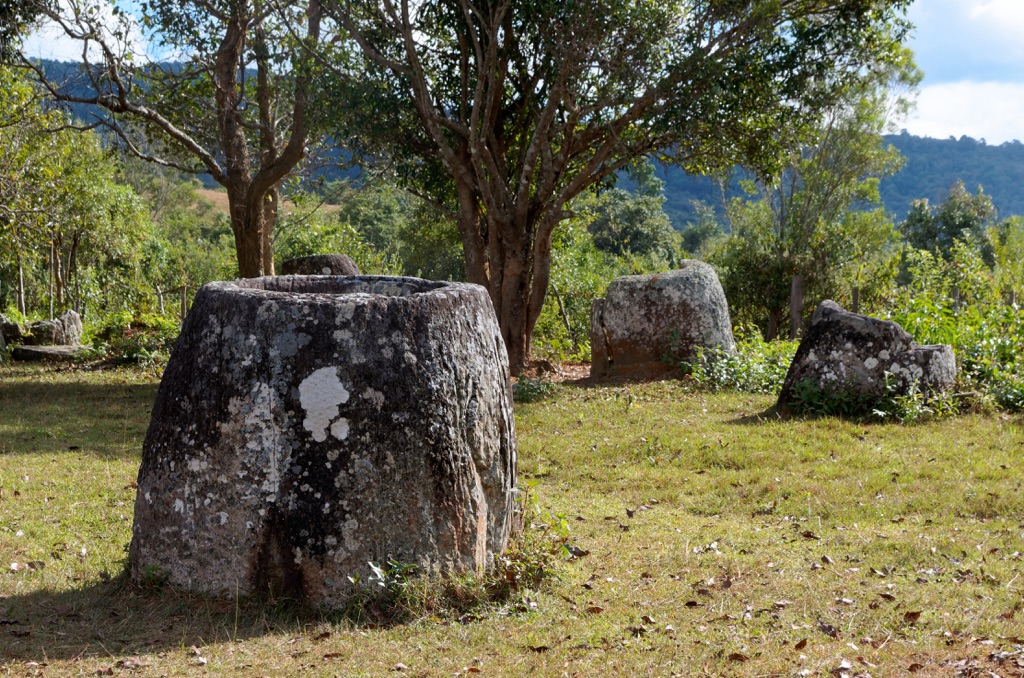
At a glance
Country: Laos
Civilization: Unknown, Iron Age culture
Age: 500 BC to 500 AD

